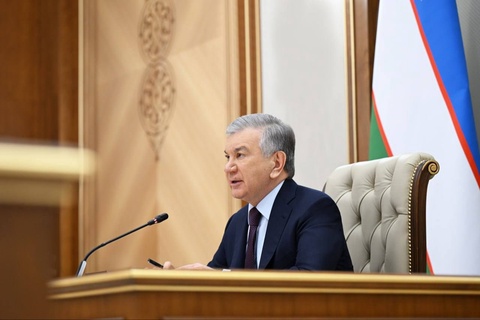A major influence of Buddhism could be found in the region west of India comprising the areas of present-day Pakistan, Afghanistan and the Central Asian countries. During the early centuries of the Common Era, the spread of Buddhism in these lands was very prominent.
Central Asia was at crossroads of trade and cultural exchange between different civilizations. The region was also a melting pot of different religions, including Zoroastrianism, Manichaeism, Nestorian Christianity, and Islam. Buddhism arrived in Central Asia in the first century CE, during the reign of the Kushan Empire. The Kushans supported Buddhism. The most famous Kushan emperor who promoted Buddhism was Kanishka I (r. 127-151 CE), who convened the Fourth Buddhist Council in Kashmir and built numerous Buddhist monuments and stupas (a hemispherical structure containing relics-typically the remains of Buddhist monks or nuns - a place for meditation) throughout his empire. The widespread of Buddhism was enabled by several factors that included the endeavors of Buddhist missionaries, traders, pilgrims, and the support extended by local rulers, chieftains and merchants.
The spread of Buddhism from Indian subcontinent to Central Asia was a multifaceted process that involved various factors such as trade, diplomacy, migration, and cultural exchange. Buddhism played a significant role in shaping the cultural and intellectual landscape of Central Asia.
A network of trade routes that comprised the Silk Road, extending from China to the Mediterranean, acted as a pathway for the exchange of goods, services, ideas and religions. Even the Buddhist merchants and pilgrims, carrying with them Buddhist scriptures, artefacts and images, travelled along the Silk Road and helped facilitate the exchange of ideas and influences of Buddhist culture from India to Central Asia.
Buddhism in Uzbekistan
Buddhism in Uzbekistan is the fourth largest religion in the country, after Islam, Christianity and Judaism. It is practiced by 0.2% of the population. Officially, one Buddhist confession is registered in Uzbekistan. Uzbekistan hosts the only functioning Buddhist temple in Central Asia.
One of the outstanding personalities who studied the history of Buddhism in Central Asia is the Japanese scientist Kyuzo Kato, an outstanding archaeologist who has been conducting archaeological excavations in the Surkhandarya region, Uzbekistan for many years.
According to a number of scientists, including Kyuzo Kato, Termez is the cradle of Buddhism, from where the teaching spread further to China and Japan.
Kyuzo Kato carried out research and documentation in Uzbekistan of the ancient cave Buddhist complex "Kara-tepa" on the coast of the Amu Darya.
The outstanding scientist became the locomotive of Uzbek-Japanese research on the period of the Kushan Empire, whose capital was located precisely on the territory of Dalverzin-tepa, on the banks of the Surkhandarya River, near the ancient city of Denau in southern Uzbekistan.
The Kushan rulers adopted Buddhism and approved this world religion as the state religion in the territory of Central Asia.
Some of the first monuments of Buddhism were found in Uzbekistan, which are now included in the UNESCO Heritage List. In total, there are about 20 Buddhist monuments in the country, most of which are located near the city of Termez in Kara-tepa, Fayaz-tepa and Dalverzin-tepa. Near Termez is the Zurmala stupa, the first Buddhist building discovered in Central Asia, a cult Buddhist building of the Kushan era.
One of them is the Fayaz-tepa temple complex, where, in fact, the history of the Buddhist temple in Uzbekistan began. Excavations here were carried out by an Uzbek-Japanese expedition led by academician Edward Rtveladze in the early 2000s. One of his students, a monk from South Korea, Yang Ki Hoon, who had a doctorate in history and also participated in excavations in Termez, decided to stay in Uzbekistan and found the temple in the country and Central Asia.
Since 1991, the temple has been called "Chainsa" ("Compassion", "Grace"), from the largest Buddhist order in Korea "Chogyo". It is the only functioning Buddhist temple in Uzbekistan and throughout Central Asia.
The fact that the ancient period saw Afghanistan and Central Asia as the centres of cultural exchange, where people from different regions and religions came into contact with each other, also acted as a conduit for the spread of Buddhism in that region. Another important factor in the spread of Buddhism to these regions was the patronage given by local rulers and merchants. Many rulers in Central Asia, such as the Kushan Empire and the Gandhara Kingdom, embraced Buddhism and supported its propagation in their territories.
Buddhism spread from the Kushan Empire to neighbouring regions, such as Gandhara, Bactria, and Sogdiana, through the activities of monks and merchants. The Gandhara region, which corresponds to parts of modern-day Pakistan and Afghanistan, was a major center of Buddhist art and learning, where famous monasteries such as Takht-i-Bahi and Hadda flourished. Gandhara art, which blended Hellenistic, Persian, and Indian styles, had a lasting impact on the iconography of Buddhist art in Central Asia and beyond. They built temples, monasteries, and stupas, and invited Buddhist monks and scholars from India to teach and preach in their courts.
The wealthy merchants of Central Asia also supported Buddhism by donating money, land, and resources to the construction of Buddhist institutions and the propagation of the Buddhist faith.
The spread of Buddhism had a profound impact on the culture and society of Central Asia. Buddhism contributed to the development of art, architecture, literature, and philosophy and it fostered a sense of cosmopolitanism and universalism that transcended ethnic and linguistic boundaries. Buddhism also interacted with other religions and influenced their doctrines and practices, such as the syncretic cult of Maitreya in Manichaeism and the use of Buddhist terminology in Sufi poetry. The role of Buddhist missionaries in the spread of Buddhism to these areas can also not be discounted. Many Buddhist scholars and monks travelled to Central Asia to spread the teachings of the Buddha and establish Buddhist communities. Dharmaraksa, a prominent Buddhist monk and scholar, travelled to Central Asia from India in the 3rd century CE. Similarly, scholars like Kumarajiva also travelled to Central Asia in the 4th century CE and translated several Buddhist works.
Apart from these enabling factors, the appeal of Buddhism itself played a key role in its spread to Central Asia. Buddhism offered a universal message of compassion, morality, and spiritual liberation that resonated with the people of Central Asia, who were seeking answers to the fundamental questions of life and death.
Buddhist monasteries and stupas found in the region of Central Asia stand testament to the spread of Buddhism in these regions. It was home to several ancient Buddhist monasteries and stupas, which were centres of learning, worship, and community life. One of the most famous examples is the Bamiyan Buddhas, a pair of monumental statues of the Buddha carved into the cliffs of the Bamiyan Valley in Afghanistan. Other notable examples include the Ajina-Tepa Monastery in Tajikistan.
The influence of Buddhism on Gandhara Art of Central Asian origin also speaks volumes about how deeply entrenched Buddhism became in these societies. Central Asia became renowned for its rich and diverse Buddhist art, which includes paintings, sculptures, and other artefacts. Many of these works of art were created by local artisans and influenced by a variety of cultural and religious traditions.
The region’s Buddhist heritage is an important part of its cultural identity and traditions and customs. Efforts to preserve and promote this heritage are ongoing, and it is hoped that the remains of the region’s Buddhist past will continue to be protected and celebrated for generations to come. With India reinvigorating its engagement with the Central Asian States, Buddhist heritage becomes a strong aspect of India’s cultural connect pillar within Connect Central Asia Policy. Recently, India hosted a mega Buddhism meet for Shanghai Cooperation Organisation (SCO) countries, seeking to emphasise the country’s civilizational connection based on ‘shared Buddhist heritage’ with the SCO nations, including Pakistan and Central Asian countries.
This renewed effort is based on the centuries-old linkages between India and the region comprising present-day Pakistan, Afghanistan and the Central Asian countries, sharing political, economic, social, cultural and people-to-people relations with Buddhism being a strong pivot of this historical and civilizational link.
Dipanjan Roy Chaudhury
(Dipanjan Roy Chaudhury is Diplomatic Affairs Editor, The Economic Times,
India and takes special interest in Central Asia, Eurasia & Russia)













